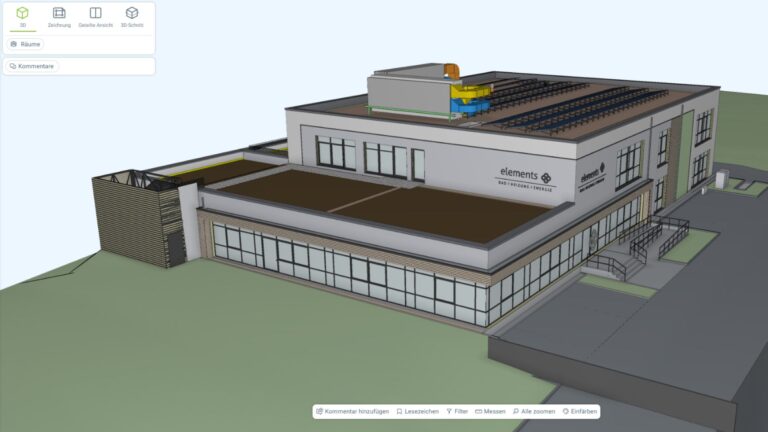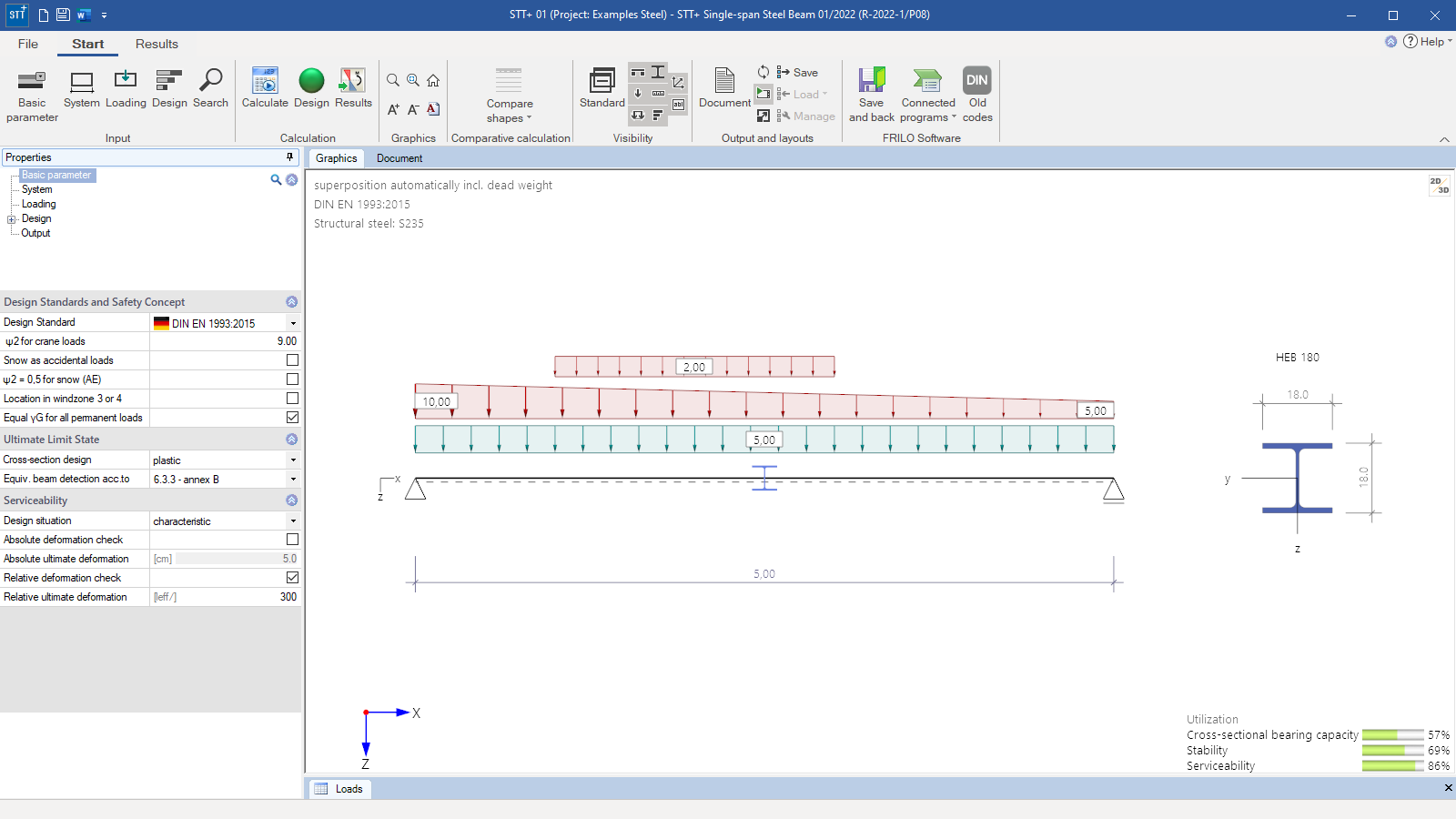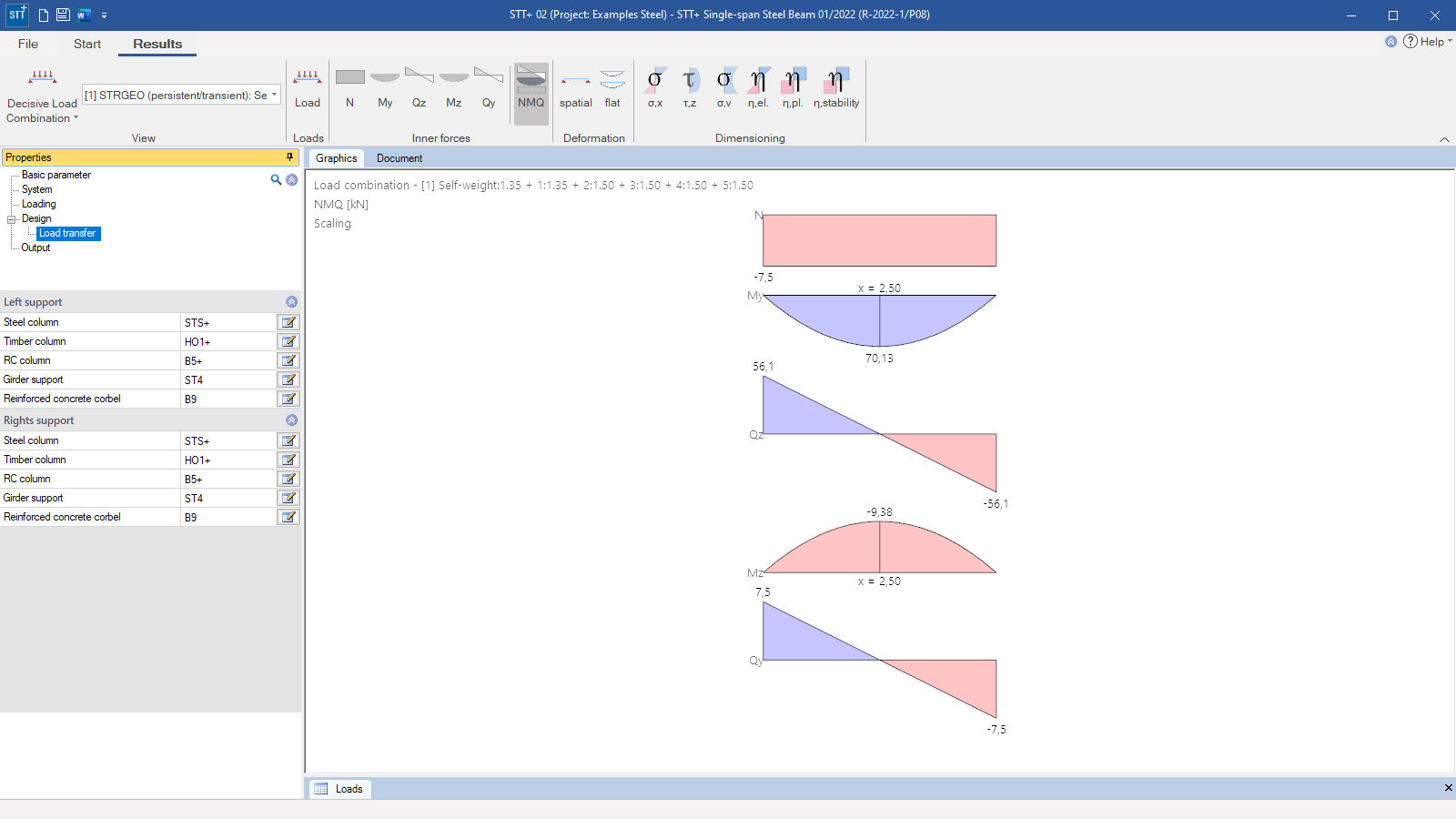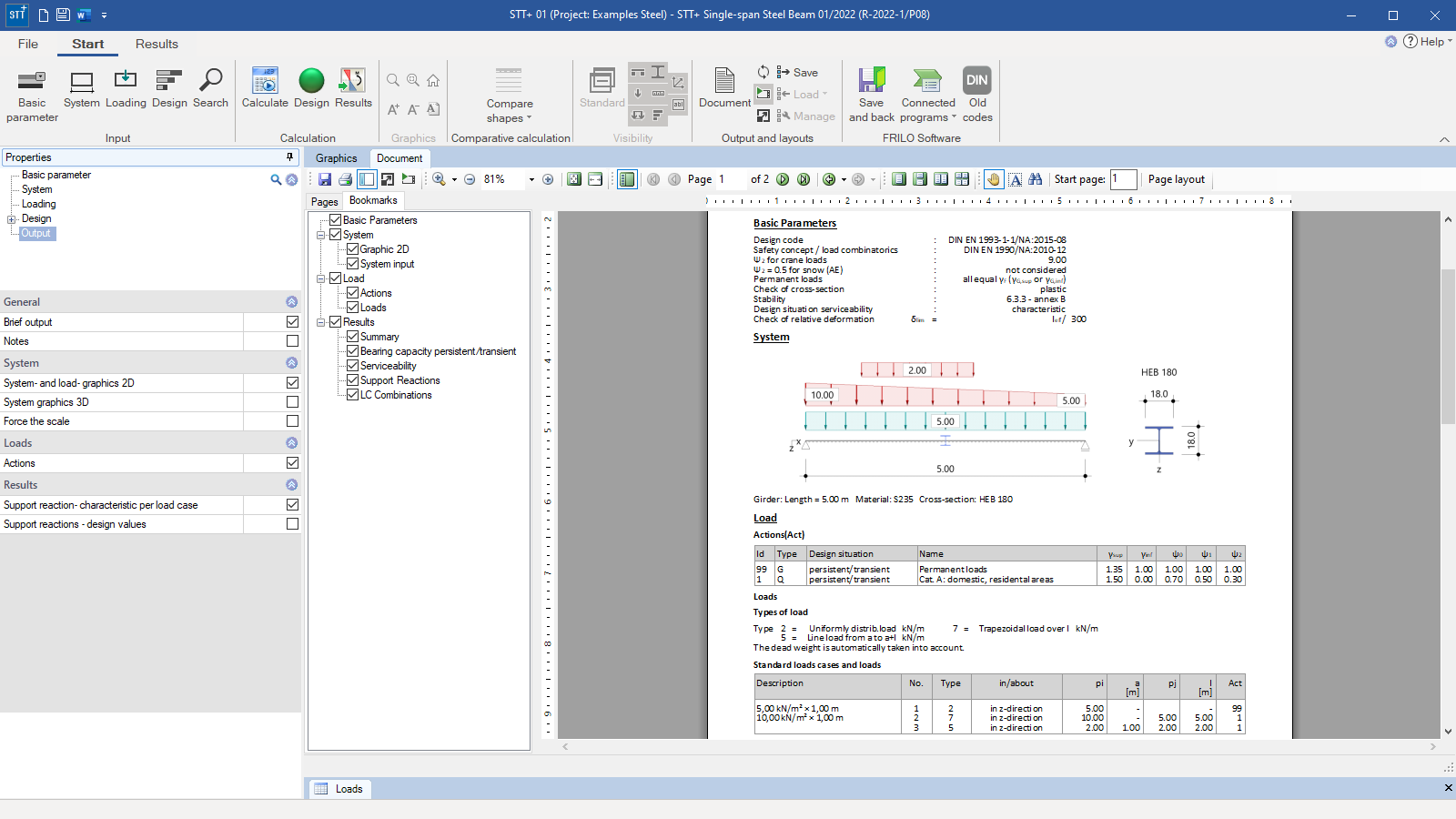
Single-span Steel Beam
STT+
The STT+ program performs the cross-sectional and structural safety verifications in accordance with the equivalent member method for single-span beams of sectional steel under uniaxial or biaxial bending and/or shear force. The verifications are performed as per Eurocode 3, the regulations of the implemented national annexes are taken into account.
Discover now more programs from the section Steel!
SHOW MOREMaterial
- Structural steel: S235, S275, S355, S450
- Annealed steel (S275N – S460N)
- Thermo-steel (S275M – S460M)
- Weathering steel (S235W – S355W)
- High-temperature steel (S460Q – S460QL1)
- Hollow section, hot-finished (S235H – S355H)
- Hollow section, hot-finished, fine-grain (S275NH – S460NH)
- User-defined steel
Structural System
Available systems:
- Statically determined, fork-mounted single-span beam
Cross-sections:
- I-sections, circular hollow sections, rectangular/square hollow sections available as standard steel shapes
- I-sections, circular hollow sections, rectangular/square hollow sections definable by the user
Supports:
- Rigid supports at both ends
- Additional definition of lateral intermediate supports (continuous, in the middle of the span, in the third points, in the quarter points, at a distance x)
Loads
- Automatic consideration of the self-weight.
- Uniform linear load, concentrated load (Q/N), concentrated moment, triangular load, trapezoidal loads.
- Automatic generation of the load case combinations.
General
The program maps automatically all necessary combinations of actions in accordance with the safety concept set forth in Eurocode 0.
Structural safety
Either the elastic or plastic cross-sectional resistance is verified. In this verification, the internal forces are determined in a first-order analysis. Furthermore, the system’s load-bearing capacity is verified based on the equivalent member method (optionally) either in accordance with paragraph 6.3.3 Annex A or B or with paragraph 6.3.4.
Serviceability
In connection with the serviceability verification, the displacements are determined separately for the different main axes. Deformations are also calculated in a first-order analysis. The user must specify the design situation that should be used for the serviceability analysis.
Document file formats
- Word
- Printer
Output
Output profile:
- pre-set brief output
- user-defined scope
Result graphs:
- Internal forces: N, My, Qz, Mz, Qy, NMQ
- Deformations: vy, vz
- Stresses: σ,x ; τ,z ; σ,v
- Utilization Eta: n,el ; n,pl ; n,stability
Transfer options
- Single-span Steel Column STS+
- Steel Girder Support ST4
- Reinforced Concrete Column B5+
- Reinforced Concrete Column B5
- Reinforced Concrete Corbel B9
- Timber Column HO1+
- Lateral Torsional Buckling Analysis BTII+
Import options
- FRILO XML
- ASCII-file
- ASCII-file (with selectable options)
Export options
- Word
- FRILO XML
Steel construction
- DIN EN 1993
- ÖNORM EN 1993
- BS EN 1993
- PN EN 1993
Support resources
News

Role model baues + partner – Multi-layered and progressive BIM planning
BIM is not software, but a planning method: this is demonstrated by the ultra-modern multifunctional building that will be built on the Gottschall + Sohn KG company premises.

“FRILO means precise and efficient work to me”
By switching to the FRILO Suite, the engineering office BILGER INGENIEURE decided to rely on the FRILO subscription model. The numerous advantages convinced the long-standing customer.




